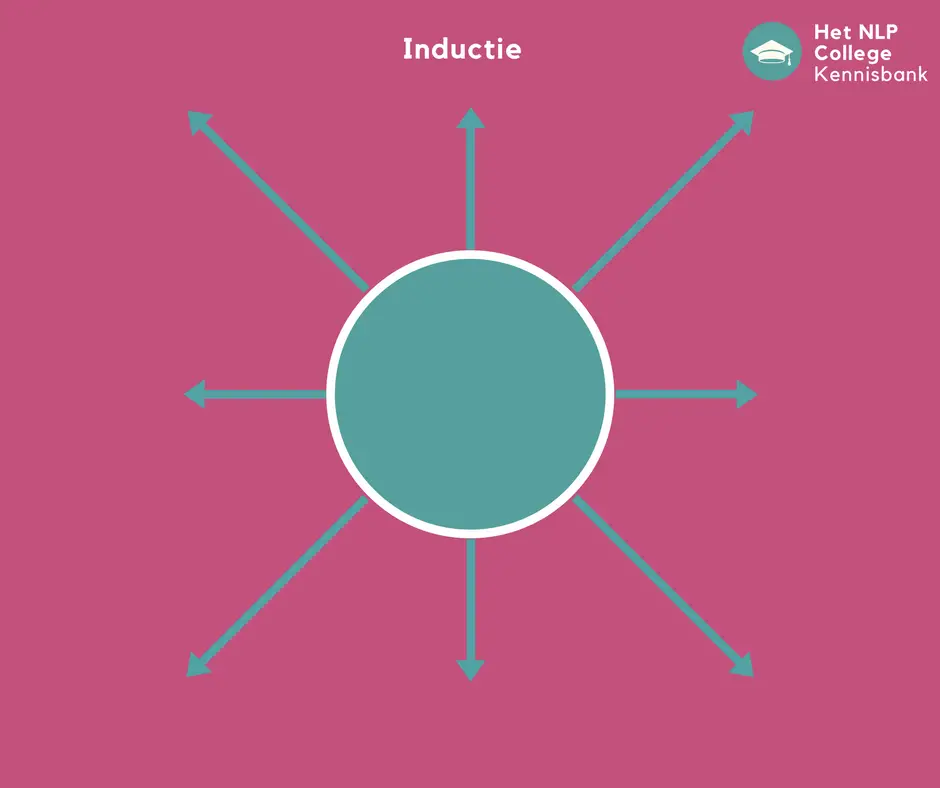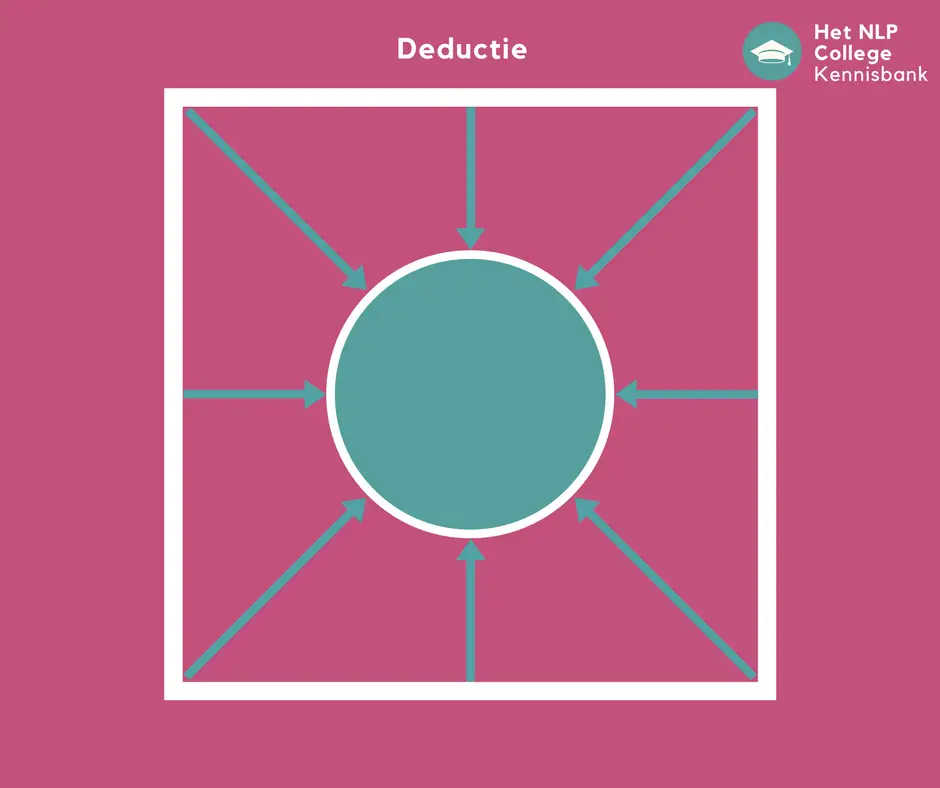![How To Deal With Sensory Overload [9 Tips For Overstimulation]](https://happyrubin.com/wp-content/uploads/2019/12/ik-ben-overprikkeld-150x150.jpg)
Inductive Teaching: How? 21 Examples & Tips! [Induction VS Deduction]
![Inductive Teaching: How? 21 Examples & Tips! [Induction VS Deduction]](https://happyrubin.com/wp-content/uploads/2018/02/inductieve-lesmethode.jpeg)
In this article you will learn everything about the inductive approach to education. Here you will find an explanation with tips about the inductive teaching method. In this article you will also find a step-by-step plan for an inductive lesson structure, with ideas, forms and examples for an inductive presentation.
Contents of this page:
Inductive Learning Meaning: Outside The Box
In short, inductive teaching means making your lessons interactive and full of opportunities for discovery . This allows you to involve your audience as much as possible in your presentation or workshop.
If I can learn this, then I can learn anything.

If you are in induction, you are in solution mode: you are outside the problem (entering). You don’t look at the problem, you just look at the solution. This will automatically get you out of the problem.
If you are in the ‘inductive mode’, you see no problem and not even a challenge. You are in the solution.
Moreover, inductive learning means that you independently make new discoveries, without looking (too much) at the already provided frame of reference. This will teach you new skills, habits and solutions.
How a child learns is inductive. The child stumbles, falls and discovers. Through this it learns the lessons of life. If a child is overprotected, the child will face more challenges later …
Other ways of inductive learning:
- Look for the abstraction: chunk up.
- Ask the wonder question. For example: ‘What if it worked? How would that be? How would that work? ‘
- Don’t chew anything for your students: just leave room for discovery. That sticks the best.
Deductive learning meaning: Inside the box
When you label something with words, you create boundaries. So, when you teach with words, there are more limits than when you teach through discovery. If you are in deduction, you are in problem mode. If your head is in the problem, you cannot see, get to or think of anything that is not the problem.
Since I can’t drive any car, I can’t drive a Cadilac either.
When you are full of problems, there is no room for other things … No room for solutions. But deduction also has its useful sides. Sometimes you want limits. For example, when setting goals : “I want this and not that.”
Other ways of deductive teaching:
- Be more specific: downchunking; you just give all the examples and answers already.
- The scientific method: there is already an assumption and this first idea creates the limits of research. Later, the supporting data will be sought to confirm this.
- You keep creativity, imagination and intuition out.
- Literally draw a frame around your notes, flipchart sheets and theory. As a result, your students see it as a ‘closed whole’, so that your students no longer think about what else is possible or what connections could be made.
You should now have a good idea of the meaning of deductive and inductive learning. Deductive teaching is not necessarily bad, but it literally has its limits. Inductive teaching and learning is indispensable in life. At the very least, use the inductive teaching method as a supplement. In the next few sections, let’s explore how to teach more inductively …
Tip 1: Want to apply inductive teaching? Answer questions yourself as little as possible
Do not take the learning experience away from your students. It’s their answers, not yours. Be an inductive teacher and let your participants discover it for themselves. Some of the ways you can deal with questions inductively are listed below.
Don’t rob your students of their learning experience. That’s like rolling their bags and selling them their own watch.
You cannot get anyone out of their disillusionment with just ‘sending’. Not a thousand words. The only way is to let the student discover it for himself. Often this means that you have to let the student go crazy in his disillusionment. The ‘fool’ who goes wrong in his mistake becomes wise.
A teacher teaches you something. A true master shakes off your current frame of reference (takes something away), so that there is room for new discoveries.
Tip 2: This is how you answer questions in an inductive way …
- Have another student answer the question, “Who can answer this question for {name}?”
- Offer a number of possible answers: a menu. Options A, B and C. What if it were option A, would it apply to that? “What do you think is the right answer?”
- Let them give their own answer through their intuition . This is always the correct answer: “What does your feeling say?” “What is your feeling about this?” “What is your heart telling you?” “Does this feel true?” “Does this feel natural?” “Does this feel correct?” When it is a fearful / sabotaging / negative answer, “Is that your heart or ego speaking?” “If I wasn’t scared I would …”
- Give the wrong answer on purpose.
- “I don’t know, what school of thought are you?”
- “How could that be?”
- Let’s put the intention in our subconscious to make more mistakes so we can find the answer.
- Ask about the intention of the question. If necessary, fill it in: ‘Correct me if I’m wrong, but is it perhaps your intention to…?’
- The opposite: “In what situations does your lesson apply?” “Do you think there are situations where it doesn’t apply?”
- Use the exploration box: test, make mistakes and go for it yourself!
- Let the students explain it themselves and even demonstrate it to other students.
Tip 3: Ask coaching questions to let someone learn something in an inductive way
Use coaching questions to let someone come to realizations and discoveries themselves.
- What do you think?
- What is your feeling?
- Is that your heart or ego speaking that?
- Let the other wonder about the Cartesian questions.
Someone who really helps someone else does not provide solutions, but at most asks questions. Everyone has the resources to solve it on their own.
Tip 4: As a trainer, never put more effort than the student

A trainer or coach will never run onto the field and say to the talent: give that ball here, I’ll score for you. Deductive trainers do this, but inductive trainers know that the student ultimately has to do it himself.
I just try as hard as you do. I won’t work harder for you than you work for yourself. I’ll meet you in the middle. And besides, I can’t do it for you either. It is your commitment, your willingness to take action, your receptivity and your ability to use your own mind.
Tip 5: Inductive teaching? Education at the subconscious level
Address the subconscious in your workshop or presentation. Learning, behavioral change and change is always unconscious! The subconscious can be addressed in different ways. Let’s take two examples of this:
- Make use of presuppositions (implications) in your language. Read the accompanying article and ask yourself, ‘What is the question I can ask that, by the nature of the presuppositions in the question itself, cause the audience to make the greatest possible changes by accepting the presuppositions that are inherent? in question? ‘
- Use subconscious subliminal priming . You do this as follows: make sure that you have already demonstrated the subject matter that you are going to convey about 3 to 48 hours in advance without commenting on it verbally. Your audience has already seen the technique in this way, so it is not completely unknown to them when you are actually going to explain it.
Tip 6: Encourage the student to do it his / her own way
Encourage the student to think outside the box, break the rules, find a solution and just do things differently than expected.
A colleague of mine, Sylvia, taught her group how to smash a plank with their hands. It didn’t work out for one of the students. In such a case, you will of course never predict or demonstrate the answer. Sylvia walked over to the student and whispered, “Who taught you to do it as others say? What if you test something else that you come up with yourself? ‘ Seconds later, we saw the student effortlessly break the plank in two … With her foot!
Tip 7: Teach your students to work with choices
Inductive learning means that you work with choices . You know you always have options. This is a proactive trait. You can also give the audience a (sense of) choice as follows. “Raise your hand now if you want a quiet start. Raise your hand now if you want an active start. ‘ You may be able to give little time for the alternative that is undesirable for you.
Problems only exist for people who don’t look at the solutions.
Tip 8: Invite the group to answer their questions for themselves

At the beginning of your presentation, ask what questions your audience has come here with. Write all their questions on a flip chart. You will of course not answer these questions directly, but you will just tell your own story. Gradually, the audience will automatically get the questions answered. You can also write down the questions that are asked in between and answer them at the end. Perhaps the question has already been answered in your presentation. You can find out how to answer questions in the previous section.
Tip 9: Give individual compliments
Give individual compliments to the students. Yes! That is him! Do use the solution-oriented approach of giving compliments as much as possible, so that you end up even more in the solutions (induction). You do this, for example, by not just giving a compliment (‘How good of you, you did it!’) But by implying the compliment in a how-question (‘ How did you succeed? And what else is there succeeded?).
Tip 10: Let the students test, discover and check for themselves whether something works
Apply the philosophy of the TOTE model . This is an inductive model because it focuses on testing, discovering, then checking again and only then deciding whether something works or works.
Tell me and I will forget. Teach me and I will remember. Get actively involved and I will learn.
Benjamin Franklin
Tip 11: Provide pattern breaks
Provide adequate pattern breaks during your workout. For example, arrange the seating arrangement completely differently after the break than before the break. In this way you ensure that the participants do not always sit in the same pattern, but that they also physically sit in different patterns. In this way they are primed to make new discoveries instead of sticking to the familiar (deductive).
Tip 12: Create a context in which to learn and discover

Create a context in which to learn and discover . You give an example / phenomenon and you ask the audience what is going on here in terms of learning points and principles. You give the audience / students the responsibility to discover the lessons themselves.
Walk the talk.
Tip 13: Recognize deduction in language
Challenge deduction (inside the box) by recognizing restrictive deductive language patterns . Use the meta-model to debunk the existing limited frameworks of old sources, statistics, averages, and conditioning, leaving room for the group to perform exceptionally and make new discoveries. For example, ask, “What is the source? Are there any exceptions? Can you become the exception?”
Tip 14: Give lots of practical exercises
Provide lots of practical exercises so that your group can experience the lesson material. If your group isn’t actually going to experience the material, it’s like studying a map without taking the journey.
Tip 15: Encourage the students to have an inquisitive attitude
Teach your students an inquisitive attitude . This can also mean that they have an inquisitive attitude towards themselves. Regularly check with the group how they are doing and how their learning performance is going. If your training runs over several days, ask at the beginning of each day how your group is doing and what changes they have already noticed.
We cannot solve a problem with the mindset that caused it.
– Albert Einstein
Tip 16: Don’t chew anything

Do not give your students the fish, but teach your students how to fish. At most, give hints and let them discover it for themselves . This is the inductive method.
So do not tell others your insights: these are not their insights, but your insights. So they are second-hand insights. That is really different than if someone had had an insight themselves.
Do you give others your insights? That’s the same as not actually exercising, but hearing someone else explain that you can look athletic. It makes people feel good enough mentally, which stops them from actually doing the job. It is very easy to think that you are doing the work when you are not actually doing the work …
When someone tells you his / her insights, it’s like asking Michael Jackson, “How do you write a great song?” And he says, “Write Billy Jean.” Is that it? So that’s how things go in books, Facebook posts and how-to seminars and webinars. That’s how he did it. Find your way. You have it in you. Guaranteed. And you have it better than all how to’s put together!
It’s nice to hear those insights from others, but it’s only one small part of what you need. You have so much to learn, discover, create, experiment and live … But you skip all that when you just get an insight from a teacher. So you have to experience it and not just hear it. Learning should not only be cognitive and mental.
Other people’s insights and information can be a great starting point, but after that you will really have to make discoveries yourself without knowing anything in advance.
Any answer that comes from the coach or trainer is completely nonsensical and completely irrelevant. Help others discover their own answers. The answer is not what has value, but the search for it.
Unless someone knows his own strength, he / she will always be unsatisfied if they know something ready-made shows . Stop teaching them things that install programs in them that say, “I’m doing this for you because you can’t do it yourself.” Because every time you do something for someone with that attitude, you take power away from them. How much you want to give them, the more they won’t appreciate it.
Let your students nurture the state of not knowing. ‘Knows nothing. Be quiet, listen and always keep discovering for yourself. ‘
You will never know everything, because you can develop endlessly. And if you don’t know anything and tune your antenna to the source, you can get everything you need from there. For example, if you want to know who you really are, do the real work. Don’t just read and listen about it.
A reader once emailed me asking, “I have multiple sclerosis and although I want to believe that mind and body are one, my muscles refuse to do what I want. Now what, how can I find the courage not to give up and keep fighting?
My answer: “If I have they always overcame’s look at my own trauma, because I was one small reason had to take courage to how small that reason was, I grabbed him to keep courage to.. However, I must answer your question remains guilty.
I think you are very powerful and brave. Any answer I would give would not come close to your own experience.
You will discover 100% ways to deal with MS through your own experience. Anyway, any answer from me would be secondhand advice, while you are the brave person currently dealing with MS.
I trust that you are going to find the courage your way – and that you already have that courage and your answers.
“Thank you very much for your answer. It always warms me up when someone is kind and affectionate to me. I always believed in ‘mind over body’ and I think I have too strong a will to give up completely. I feel that I have to keep believing and practicing, practicing, practicing. And let me pretend, because ‘fake it’ till you make it ‘has always worked for me too. “
Tip 17 – Involve the right hemisphere

Work with the right hemisphere. So work with feelings, the subconscious mind and emotions . Also show your own emotions from your heart.
Tip 18 – Reward questions
Reward questions. “How nice that you ask that!”
Tip 19 – Make use of solution-oriented working
Use the solution-focused approach. An example of this is the wonder question (“What if …?”).
Tip 20 – Turn on peripheral vision
Peripheral vision is also inductive. This way you get out of the problem because you literally look beyond the problem. Are you a coach? So put yourself or your client in peripheral view while the problem is being discussed.
Arthur Mendelson: (raising four fingers) “How many fingers do you see?”
Patch Adams: “Four.”
Arthur Mendelson: “No, no, no! Look past the fingers! Now tell me how many you see”.
(Patch looks at the fingers.)
Arthur Mendelson: You focus on the problem. If you focus on the problem, you don’t see the solution. Never focus on the problem “.
(Patch looks at Mendelson’s eyes)
Hunter Patch Adams (the fingers in double sight): “Eight.”
Arthur Mendelson: “See what no one else sees. See what everyone doesn’t want to see … out of fear, conformity or laziness. See the whole world every day as a new world!”
– From the movie ‘Patch Adams’
Tip 21 – Design an inductive lesson structure

Use the step-by-step plan for an inductive lesson structure . You can find a link to this step-by-step plan in the last paragraph of this article!
Let me tell you what I think about school: it’s a waste of time. A bunch of people bumping into each other, a guy in the front saying “2 + 2” and the people in the back saying “4”. Then the bell rings and they give you a carton of milk and a piece of paper that says you are going to the toilet or something. I mean, it’s no place for smart people. I know that’s not a popular opinion, but that’s my two cents on this topic.
– Rick from Rick & Morty
Dive into these fun books about inductive teaching
If there are two books that, without all kinds of theoretical models, deal very practically with how to teach inductively, then these are two books. ’88 insights to teach even better ‘exactly takes over the tone of this article, and’ Effective teaching with NLP ‘is full of small and large tools from an inductive philosophy, namely NLP.
How can I teach inductively? Step-by-step plan for inductive lesson structure
With the tip from the previous section, on answering questions, you are well on your way to becoming an inductive teacher. Also read the valuable article in which you learn to give interactive presentations and workshops (click here for the step-by-step plan). It contains the step-by-step plan for an inductive lesson structure, with ideas, forms and examples for an inductive presentation.

![5 Best Self Care Tips For College Students [#1 Advice]](https://happyrubin.com/wp-content/uploads/2021/09/the-best-self-care-tips-for-college-students-440x264.jpg)
![How To Stick To New Year’s Resolutions: 9 Tips [Smart & Sure Ways]](https://happyrubin.com/wp-content/uploads/2019/12/tips-voor-goede-voornemens-440x264.jpg)
![How To Stop Being So Hard On Yourself [9 Great Tips]](https://happyrubin.com/wp-content/uploads/2019/12/we-moeten-zoveel-van-onszelf-en-anderen-150x150.jpg)

![19 Best Ice Breaker & Get-To-Know-Eachother Games [Fun & Simple]](https://happyrubin.com/wp-content/uploads/2018/02/leukste-ijsbrekers.jpeg)
![Becoming More Social: 41 Tips [Improving Social Skills] [List]](https://happyrubin.com/wp-content/uploads/2018/06/sociale-vaardigheden1.jpeg)
![How to start a conversation with anyone: 15 tips [Making contact]](https://happyrubin.com/wp-content/uploads/2017/08/gesprekstechnieken1.jpeg)
![372 Friend Tag Q&A Questions [Best Friend Quiz]](https://happyrubin.com/wp-content/uploads/2019/05/best-friend-tag-vragen-voorbeelden.jpg)



![Clingy & controlling behavior of partner/date [Extreme examples]](https://happyrubin.com/wp-content/uploads/2020/06/claimerig-gedrag-van-partner-eigenschappen-en-voorbeelden-150x150.jpg)

![How to recognize if a man is in love [Signals & his body language]](https://happyrubin.com/wp-content/uploads/2020/05/verliefd-gedrag-van-mannen-herkennen-150x150.jpg)


![Free will and religion / theology [Verses & Quotes on free will]](https://happyrubin.com/wp-content/uploads/2020/10/religion-on-free-will-quotes-1050x640-1-150x150.jpg)

![Dealing With Setbacks & Hardship [Lessons & Examples]](https://happyrubin.com/wp-content/uploads/2018/11/omgaan-met-tegenslag-tips-hoe-dan.jpeg)
![NLP Agreement Frame: Use these exact sentences [Examples]](https://happyrubin.com/wp-content/uploads/2020/10/agreement-frame-nlp-1125x640-1-440x264.jpeg)
![122 Best Comebacks In Any Situation [Best Examples]](https://happyrubin.com/wp-content/uploads/2020/06/beste-comebacks-technieken-tips-440x264.jpg)
![Using Hypnosis to Stop Smoking [HowTo]](https://happyrubin.com/wp-content/uploads/2020/05/stoppen-met-roken-door-hypnose-150x150.jpg)
![Presuppositions language pattern: meaning & examples [NLP]](https://happyrubin.com/wp-content/uploads/2020/04/wat-zijn-vooronderstellingen-150x150.jpg)
![Peripheral Vision: Meaning & Exercise [Essential Skill]](https://happyrubin.com/wp-content/uploads/2020/04/perifeer-zicht-trainen-tips-150x150.jpg)

![How To Start A Coaching Business [21 Smart Tips]](https://happyrubin.com/wp-content/uploads/2018/11/coachingpraktijk-starten-tips.jpeg)
![How to make dreams come true? [33 tips to realize dreams 100%]](https://happyrubin.com/wp-content/uploads/2018/05/dromen-mijlpalen.jpeg)
![How To Become Rich? 27 Millionaire Tips [Guaranteed To Work]](https://happyrubin.com/wp-content/uploads/2018/01/hoe-kan-ik-rijk-worden.jpeg)
![77 Best Online Marketing Tools [Recommendations] [Also Free]](https://happyrubin.com/wp-content/uploads/2018/08/beste-onlne-marketing-tools-tips.jpeg)
![Complete List Of Virtues & Qualities [Including Explanation]](https://happyrubin.com/wp-content/uploads/2018/12/kernkwaliteiten-uitleg.jpeg)
![Being Attentive: How Do You Do That? [Meaning & 9 Tips]](https://happyrubin.com/wp-content/uploads/2019/05/attent-zijn.jpg)
![Being Conscientious: Meaning Of This Virtue [Explained]](https://happyrubin.com/wp-content/uploads/2018/07/Consciëntieus-persoon.jpg)


![Best Books About Burn-Out [Top 10] [Update 2025]](https://happyrubin.com/wp-content/uploads/2020/06/beste-boeken-over-burnout-lijst-440x264.jpg)
![Best Self-love Books [Top 10] [Update 2025]](https://happyrubin.com/wp-content/uploads/2020/04/beste-boeken-over-zelfliefde-aanraders-440x264.jpg)
![Life changing books: 10 books that change your life [2025 Update]](https://happyrubin.com/wp-content/uploads/2020/03/levensveranderende-boeken-tips-150x150.jpg)
![Top 10 Best Books: Recommendations Per Genre [2025 Update]](https://happyrubin.com/wp-content/uploads/2019/12/best-books-per-genre-150x150.png)
![Best Books On procrastination: Must Reads [List] [2025 Update]](https://happyrubin.com/wp-content/uploads/2019/11/beste-boeken-over-uitstelgedrag-tips-150x150.jpg)
![Joe Dispenza: Events To Attend [2025 & 2026] [All Info]](https://happyrubin.com/wp-content/uploads/2020/02/joe-dispenxa-events-440x264.png)
![Best Online Study Options [Online Education Top List]](https://happyrubin.com/wp-content/uploads/2019/03/best-home-study-options-440x264.png)
![Teachable Review & Experiences 2025 [Bad Online Training Tool?]](https://happyrubin.com/wp-content/uploads/2020/02/Teachable-review-ervaringen-150x150.png)
![Audible Review, Experiences & Special Discount [Scam?]](https://happyrubin.com/wp-content/uploads/2020/01/audible-review-ervaringen-150x150.png)
![Guest Posts Wanted [Free & Always Directly Accepted]](https://happyrubin.com/wp-content/uploads/2019/05/gastbloggen-regels.jpg)


Hi I want to teach an inductive lesson for retail and involve 5 supermarkets in this. Initially, I want to start a conversation about which supermarket is the best in their opinion (opinion). They may then separate in groups and have to find all kinds of (preferably facts) points that confirm or could confirm this. What are the positive differences with other supermarkets and how can they show this. we share with each other in the group. They are then allowed to work in preparation for their visit to the relevant supermarket in order to have a good basis for the presentations. Is this an idea? Or do you see another possibility ???
I see this as a great way to work. 100% inductive. I couldn’t have thought of it myself – it’s that good.
It is very comprehensive and educational. I have nothing to add to it.
Thank you for the response.